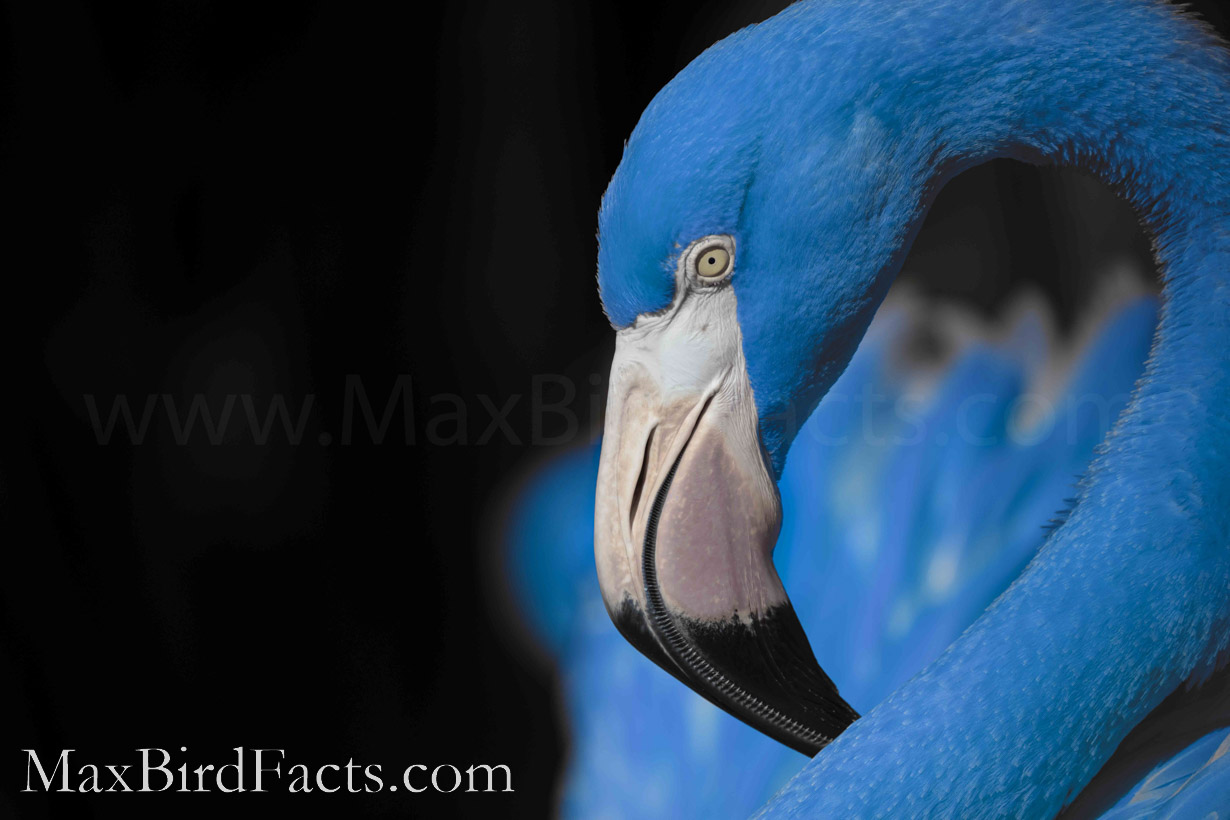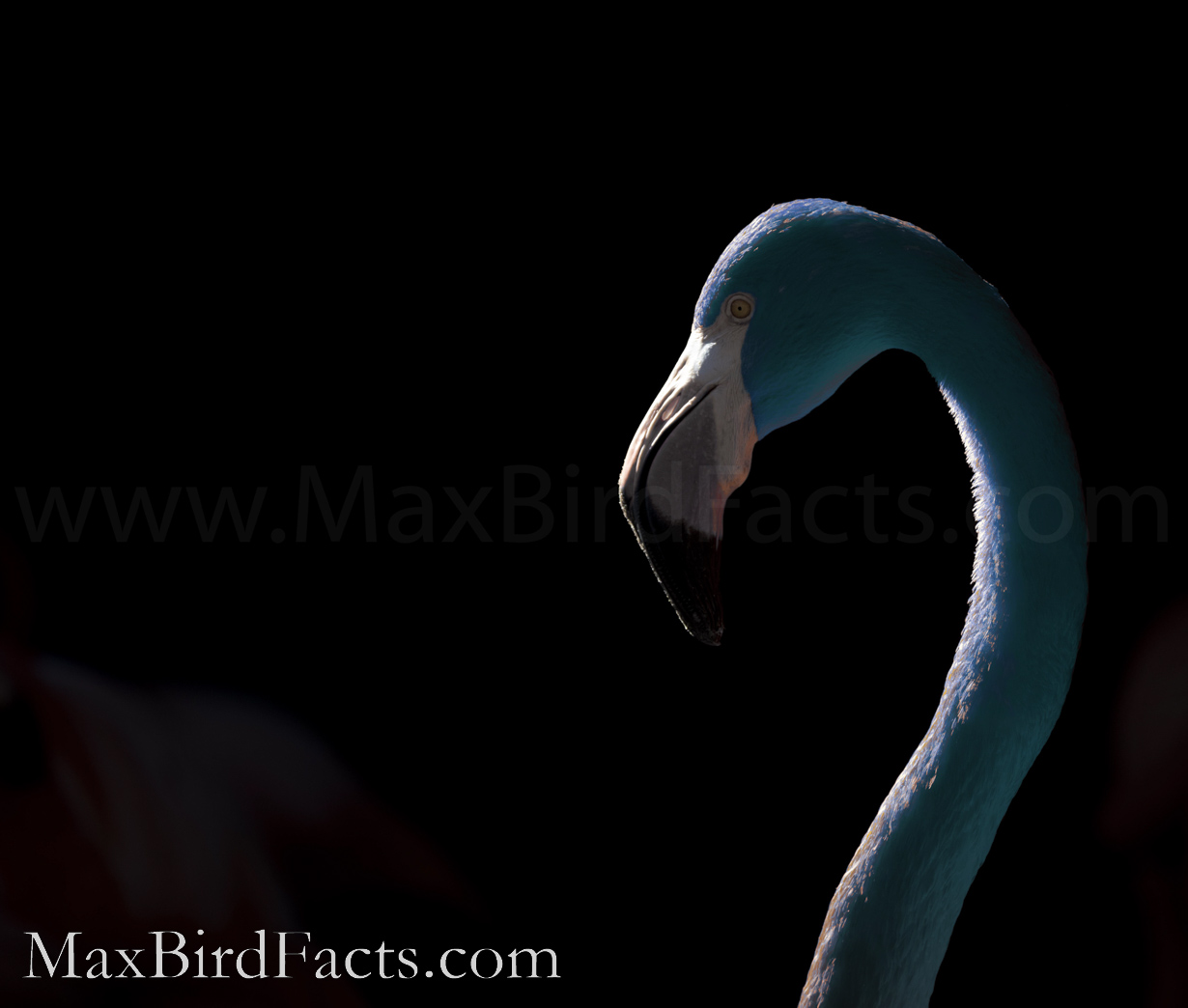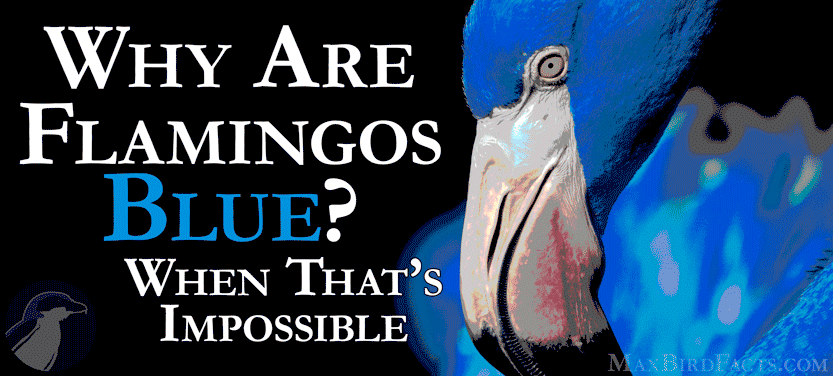How can a pink American Flamingo suddenly become brilliant blue? The simple answer is by using Adobe Photoshop. However, I’ll prove how this is naturally impossible for these birds to be blue.

We all know flamingos to be tall, slender birds with odd-shaped beaks and a peculiar honking call. But they are by far most known for their glorious pink plumage.
The coloration of the plumage also called its aspect, is created through a chemical process. We won’t go massively into detail on how flamingos get their color. I have that covered in detail in another article, but here is a summary of how they achieve this.
Pigmentary vs. Structural Coloration
These birds are filter feeders, eating small crustaceans, mollusks, and insect larvae. As the prey feeds on the algae, they accumulate organic molecules from the vegetation in their bodies, specifically carotenoids.
This chemical is responsible for yellow, orange, red, and pink colors in nature. The flamingo’s prey is rich in beta carotenoids, and this causes the pink coloration in their beaks, skin, and feathers.

The quantity and quality of prey they consume determine the intensity of their aspect. If a bird is not able to feed on as much prey, or if it is unhealthy, the coloration of its feathers will suffer.
Reds, oranges, yellows, and pinks are pigmentary colors. Meaning the feathers are absorbing all the wavelengths of light that aren’t being shown.
So with our flamingos, the pink wavelength is reflected off the feathers, while all other wavelengths are absorbed. This is very different from how blue colors are formed.
Structural coloration is created by changes to the keratin of the feather creating unique surfaces to refract light.
Blue, in particular, requires air within the keratin molecules for light to be scattered off. This scattering only occurs if the feathers are made in a very specific way, making it relatively uncommon.
Now that we know the difference between structural and pigmentary coloration, we can understand how blue flamingos cannot exist in nature. Because the pink color they have adapted to use is pigmentary, their feathers aren’t constructed to refract light.
Again, pink is caused by reflection, while blue is created by refraction.
Why Fake a Blue Flamingo?
The only reason I can think of is that it is a pretty good prank. Unless you know how feathers get their color.
This gag has also spurred some other questions, such as “why are flamingos green,” and “are flamingo yokes pink?” These were also done through Photoshop to edit the colors of the birds.
One question that does have merit is, “why are flamingos black?” Called melanism, this is extremely rare but does happen in nature.
Melanism is essentially the inverse of albinism, where the animal is almost entirely black. The black appearance of the animal is due to excessive amounts of melanin produced.
It would be a fantastic world if we could change the color of these strange birds by modifying their diet, but alas, we cannot. Changing the aspect of a bird’s plumage is more complicated than adding food coloring to a flower’s water.

I think this is what makes many people believe different colored flamingos could exist. Since we’ve been taught that a flamingo gets their color from their food, it would make sense that if we change their food, we can change their color.
This thought doesn’t take into consideration the structural needs for this to happen. Animals are much more complex than plants, and the flower and flamingo idea doesn’t work.
The reason we see the flowers changing color is that the water itself is being shown through the petals’ skin. The flamingo processes the carotenoids from the food it eats and repurposes those chemicals into the pigments for its aspect.
I hope you learned something new today, whether that is how feathers get their color or that people thought blue flamingos were real!
If you have any ideas for future articles or questions about this one, please leave me a comment below!
Make today great!
Max

References
“Are There Really Blue Flamingos? The Final Verdict.” Flaminglet, 11 Nov. 2019, www.flaminglet.com/are-there-blue-flamingos/.
Bouchard, Anthony. “The Real Reason Why Flamingos Are Pink: Plants And Animals.” LabRoots, Labroots, 10 Dec. 2019, www.labroots.com/trending/plants-and-animals/16349/why-flamingos-are-pink.“What Do Flamingos and Salmon Have in Common? Flamingos.” Causes of Color, www.webexhibits.org/causesofcolor/7D.html.“Why Are Flamingos Pink?” CBBC Newsround, BBC News, 17 Jan. 2019, www.bbc.co.uk/newsround/40964645.

Pingback: Why Are Roseate Spoonbills Pink – Shrimp Bowls and Pigmentary Coloration – Welcome to MaxBirdFacts.com!!!